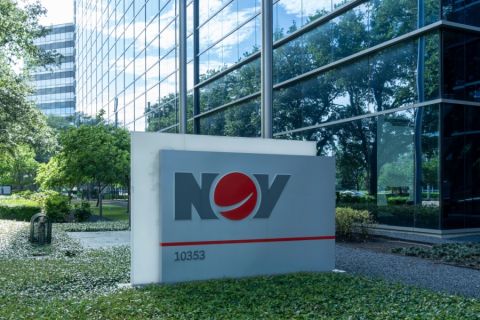
(Source: Hart Energy; Shutterstock.com)
[Editor's note: A version of this story appears in the June 2020 edition of Midstream Business. Subscribe to the magazine here. It was originally published June 1, 2020.]
Hopefully, as you are reading this, we are in the process of reopening the economy and the government from the COVID-19 pandemic. COVID-19 has had a far-reaching impact on our world, and it poses new legislative and regulatory issues for the midstream sector.
As of the end of April, more than 60,000 people have died from COVID-19 in the U.S. with at least 1 million Americans infected. Those numbers will continue to grow as the oil and gas industry suffers a one-two punch from the public health situation and the consequences of the oil price war between Russia and Saudi Arabia, which tanked the price of oil in roughly a mere month’s time. The industry will not be the same for some time, especially since demand will remain slumped after Americans start to emerge from lockdown.
However, the industry is resilient, and we will bounce back. People will be flying and driving again. The big question is how long this recovery will take because the industry cannot start and stop at the flip of a switch.
In addition, the U.S. is in a presidential campaign year and has a number of unresolved issues in Congress and on the regulatory front to which industry members should pay attention.
On the legislative front, Congress has moved into emergency or stimulus funding mode. It is trying to shore up the economy as best it can through direct spending that either stimulates or invests in the economy. Normal legislating has taken a back seat to this emergency work. In addition, Congress is not meeting regularly due to COVID-19 and most likely won’t for some time. It appears Congress will only return to Washington, D.C., to vote on emergency spending or stimulus packages. Nonetheless, important legislative issues remain for the midstream sector.
Of them, the most important is the Pipeline Safety Reauthorization, which expired in September 2019. It is important to note that neither the U.S. Department of Transportation’s Pipeline and Hazardous Materials Safety Administration (PHMSA) nor industry will grind to a halt, absent Congress passing a new Pipeline Safety Reauthorization legislation because it’s not required to keep the PHMSA operating. While this has not always been the case, reauthorization has become a very partisan issue, which has delayed its progress during this session of Congress.
As the congressional calendar shortens due to COVID-19, election campaigning and the fact that there will be very little legislation outside of emergency/stimulus spending packages, it does not appear that Congress will make much progress on Pipeline Safety Reauthorization.
Regulatory challenges
Major unresolved issues that the midstream faces on the regulatory front are the U.S. EPA methane rule, PHMSA’s Gas Mega Rule, EPA and the Army Corps’ Waters of the United States (WOTUS) rule, and issues surrounding Nationwide Permit 12 (NWP-12).
- EPA methane regulations—We heard that EPA was focused on releasing its methane regulations in May. Since EPA staff have been working remotely in response to COVID-19, we anticipate this final rule slipping to some time in June. This has been a campaign pillar of the Trump administration, and the failure to release this rule will pose problems for the midstream because it would provide regulatory certainty for GPA Midstream members.
- NWP-12—In mid-April, the District Court of Montana handed down a troubling decision that impacts NWP-12 across the country. The court decided that an Endangered Species Act consultation was needed. The midstream industry uses NWP-12 for a number of projects, most notably installing gathering lines. The new NWP-12 situation has upended the industry at a painful time. With markets not operating in a favorable fashion and the demand for midstream products declining, the court’s decision creates uncertainties that will directly impact the ability to develop the midstream.
- WOTUS rule—Last, the Trump administration finally rolled out its version of a regulation defining WOTUS. This impacts the midstream because it determines the need to obtain a Clean Water Act permit to build or install a project. This final rule will become effective in June and surely will be litigated. This litigation, to be expected given the controversial nature of the rule, will create some uncertainty in the immediate future.
While we all struggle to ensure the health and strength of the industry, we face many challenges and unresolved issues this year in Congress and on the regulatory front. The staff and committees of GPA Midstream Association are watching these issues and working to find the best outcomes for the industry.
Recommended Reading
Keeping it Simple: Antero Stays on Profitable Course in 1Q
2024-04-26 - Bucking trend, Antero Resources posted a slight increase in natural gas production as other companies curtailed production.
NOV Announces $1B Repurchase Program, Ups Dividend
2024-04-26 - NOV expects to increase its quarterly cash dividend on its common stock by 50% to $0.075 per share from $0.05 per share.
Initiative Equity Partners Acquires Equity in Renewable Firm ArtIn Energy
2024-04-26 - Initiative Equity Partners is taking steps to accelerate deployment of renewable energy globally, including in North America.
Repsol to Drop Marcellus Rig in June
2024-04-26 - Spain’s Repsol plans to drop its Marcellus Shale rig in June and reduce capex in the play due to the current U.S. gas price environment, CEO Josu Jon Imaz told analysts during a quarterly webcast.
Ithaca Deal ‘Ticks All the Boxes,’ Eni’s CFO Says
2024-04-26 - Eni’s deal to acquire Ithaca Energy marks a “strategic move to significantly strengthen its presence” on the U.K. Continental Shelf and “ticks all of the boxes” for the Italian energy company.





